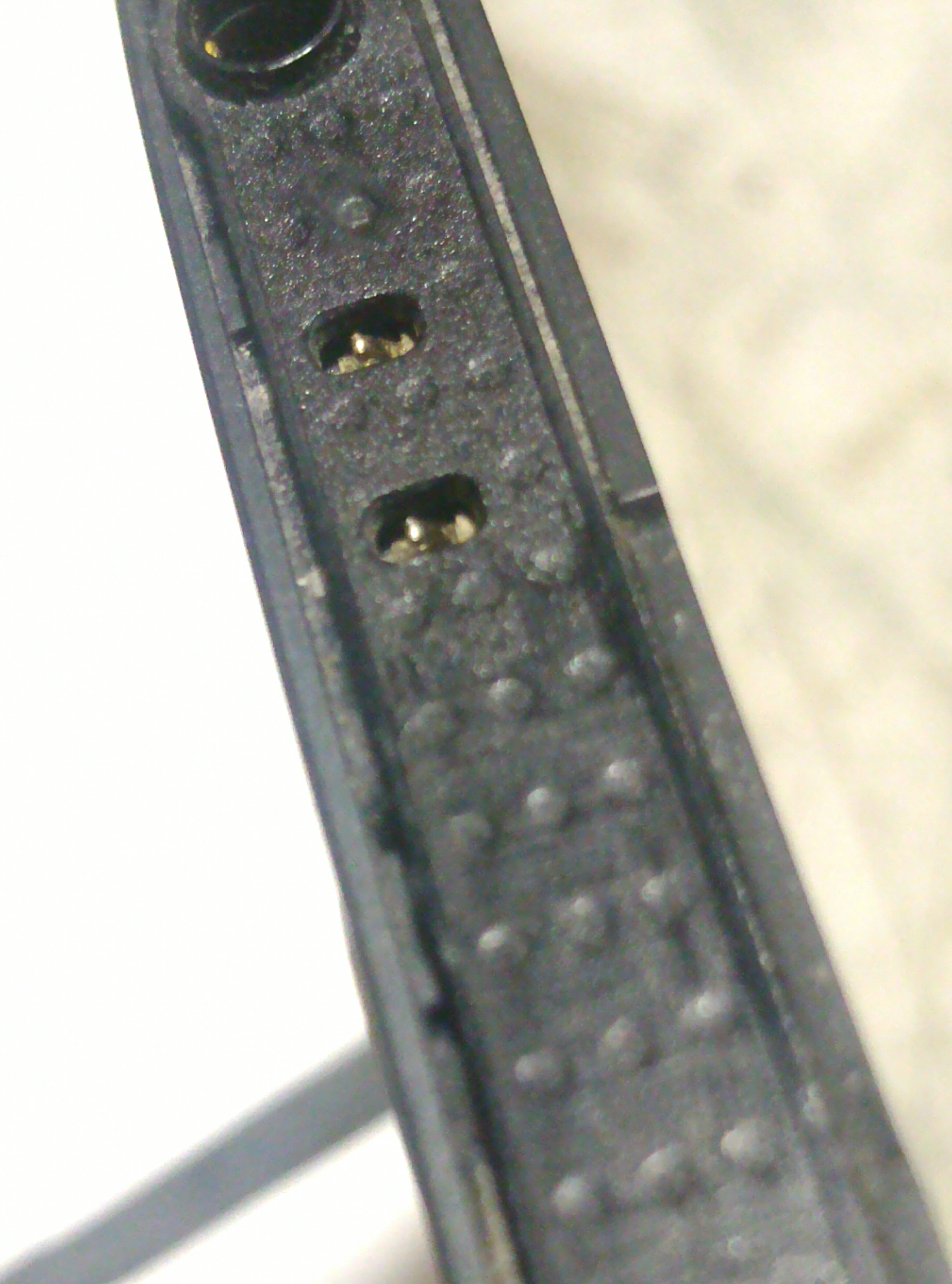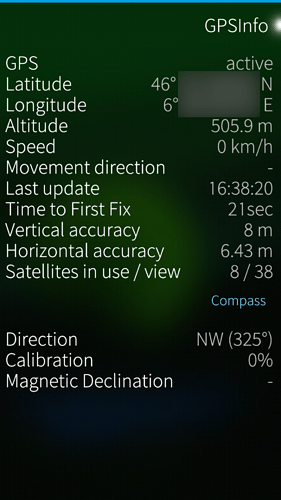During the last two years, because of the pandemics, I only traveled by car with my (XA2) gps on, so I got usually a quick fix. Last month, I spent 4 days in London (about 1000 km from my home) and I was unable to get a fix. I truely think there is an antenna problem, mixed with a software problem.
But if it was an antenna problem, why would it work OK where you live but not in London? Surely you’d be getting problems at any location in this case?
… Unless you’re suggesting that the weather here in the UK is much worse (OK, so it is) that heavy cloud cover was masking a weak signal and therefore couldn’t be picked up by a broken antenna whereas it could where you live (all sunshine and clear skies I presume!) 
Of course there is always the ‘camera’ possibility as well I think (bear with me). The XA2 has a great 23 Mpx camera and can take pretty good photos on Android. But on SFOS it is deliberately crippled and can only do about 16Mpx I think - and this is because AOSP lacks the proprietary Sony drivers that allow the camera to use its full potential. Hence the XA2’s camera on SFOS is mediocre at best and rubbish in poor light, delivering grainy photos which look like they were taken on a 2 Mpx digital camera from the 1990’s.
What if that may also be contributing to the problem - that the AOSP GPS drivers available to SFOS for the XA2 are crippled over what the proprietary Sony GPS drivers could deliver?
Does anyone have any info either way on this?
See: GPS signals - Wikipedia and ref #49:
A more sensitive receiver will potentially acquire the ephemeris data more quickly than a less sensitive receiver, especially in a noisy environment.[49]
I noticed the same phenomenon as you are reporting here: Sats in sight with a good looking signal and no fix for loong time/never.
But is the bargtaph signal quality related to the actual bandwidth needed to download the necessary data? I don’t know but could imagine it as a ‘more complex than that’ question.
Anyways, I had the same as you report. And at the end, it was worse.
I did the fix.
Since 5 days, I tested daily, I have a fix in 20 seconds to 3 minutes.
It will maybe not last but atm, the difference is huge and the phone became useable for location again.
I think it’s the same case for GPS too, that’s my conclusion long time now, it also explains why it cannot be fixed by SFOS updates.
Yes, but if you are testing daily (from the same location and roughly at the same time?) then maybe the GPS is not requiring a cold start and will therefore get a quicker fix?
Going back to the above, @phklrz got a quick fix until he moved away from his usual position to London where, presumably a cold start was required?
I think a better test would be for you not to test daily, but to leave it untested for a week and then try, or move to a totally different location a good distance away and then try.
This is a good point I think. Can the ephemeris data only be downloaded from the satellites themselves, or is there another way of getting it?
I can quite see a situation where:
- On the XA2 there is no general widespread hardware fault affecting the antenna on every phone as such (if there was details of this this would be all over Android XA2 forums, etc, and it isn’t, so its unlikely) but that the hardware design of the antenna is some compromise (cost, time, etc) which makes it substandard to other phones.
- Because it is substandard it needs stronger signals to work properly - especially in cold start conditions. Downloading the ephemeris data therefore takes much longer because of dropped signals, re-tries, etc than it would on another phone. Hence way longer to get the first fix on a cold start.
- However, this inadequacy is compensated for on Android by Sony’s proprietary drivers, and/or the ability to download the ephemeris data using something other than the GPS antenna (e.g. wifi, mobile data, etc) from another source, and/or retaining and using previously downloaded ephemeris data in a different way to better predict where the satellites are now, or whatever other Android based magic.
- But since the XA2 is a Sony phone designed and sold in its millions with Android, this is all fine for Sony - GPS works as it is intended even if it is a bit like a swan (graceful motion above the water, frantic paddling and course corrections below the water to make the swan move)
- Wiping Android and installing SFOS removes all the magic (the frantic paddling) and leaves us with a swan (XA2) dead in the water with just the wind to blow it along very slowly and very occasionally. We’re left facing just the bare design compromise with all the problems it causes.
- All the above said, SFOS users have been able to get an improved performance by opening the phone and removing the top cap, etc (maybe exposing the real GPS antenna more openly so it gets a stronger signal), but that’s hardly a solution - we can’t all walk around with phones stripped of bits of their casing just to get GPS to work.
If my above imagined scenario is anything near reality it does of course mean the problem isn’t fixable by Jolla or any of us unless access can be gained to some of that Android magic.
You are right. I was too excited to wait though.
But I’ll be 600 km away next week. Will see.
However, it remains that before, every day or not, same place or not, it was just unusable.
But that could be, as you say, an exceptional case.
The top cap has to be a part of the system.
I can’t believe it is working better without it.
From what I experienced (but it can by by chance), a well reinstalled top cap seems to give better results than no cap at all.
Anyway, the best way to know whether HW is involved, is to fix it.
So, girls, guys, who’s next?
![]()
Indeed, I am sure it is. If there are electrical spring contacts pressing against it when installed then it has a purpose other than structural or cosmetic. I also note that the 3.5mm headphone jack passes through the metal top cap and the uppermost collet of a headphone plug (furthermost from the tip of the headphone plug) will likely come into contact with the metal cap itself when plugged in. The uppermost collet of a 3.5mm jack plug is always earth (ground), so that again reinforces the case that the top cap is a common earthing or ground point.
No, look: if you watch it closer, you will see the plastic collar coming from the underneath plastic frame. It prevents the jack from touching the top cap:
(not very well framed pic but I have no other…)

I changed the screen of my XA2 and i lost my wifi and bluetooth signal due to the new housing. While trying to fix this, i removed all the small clips from tge back cover which connect to the housing. So my GPS was also gone. After soldering a wire to the gps antenna contact on the motherboard, everything was fine again. Got a fix in a few seconds(i use suplpatcher). But then my XA2 died because of a battery connector fault.
I used my old Xperia X with LineageOS and it showed the same behaviour, first time i wanted to use gps, it took more than 10 minutes to get a fix with over 30 satellites in sight.
If you want to test your gps you have to restart the phone for every new measurement if you haven’t changed your location or you will always get a fast fix.
Hi,
The fixed XA2 is still very efficient.
This would tend to show that the HW fix had a great influence.
So, after moving 600km away,
no GNSS use during travel,
Phones offline,
I had:
Xperia X:
Xperia XA2:
Conditions:
Phones side by side (uncalibrated compasses)
Approx 20% cloudy
In the city with very good sky view.
Very surprisingly and in contradiction with all readings,
the GNSS receivers were not in a cold start situation as they would have needed at least 12.5 minutes to have a first fix.
All documentations are saying that, among other things, moving more than 100km puts the device in a cold start condition. I am lost here…
Then, I made other tests, in a street with very poor sky view and in a train.
The X was even so better than the XA2, having few sats used but a fix where the XA2 didn’t.
But the most remarkable
The XA2 had up to 42 satellites (95% in red with probably zero reception) where the X had seen maybe 15, with more normal reception levels.
Does that confirm that there is an ephemeris update problem on the XA2?
Like if it would not be able to delete outdated ephemeris data?
I also noticed, when in cold star (days after last fix, or far for last fix), that satellites in view increase qucikly (20 to 30 secondes?) to about 20 satellites, without anyone in use, but after 15 to 20 seconds more, with about 35 to 40 sat in view, fix is ok.
Remember that we are dealing here with GNSS, not only GPS.
So, satellites are from GPS, Galileo, Beidoo aand also Glonass constellations.
Maybe there is a first issue with antena ant top cap, but also with the use of several constellations.
It would be interested to see if satellites in use just after the fix are all in the same constellation.
I believe they belong to several constellations.
Thanks to @dcaliste very interesting post in the big gps thread, we can see that.
Hi @ric9k
Are you saying that because there are GPGSV and GLGSV string in NMEA output?
I will try that as soon as I got time for that.
Yes. From what I read on wikipedia, this indicates to which constellation they belong.
Or, not?
Yes. If it starts with:
- GP = GPS
- GL = GLONASS
- GA = Galileo
- GB = Beidou
- GQ = QZSS regional GPS augmentation system (Japan)
GSV = satellites in view sentence
I was quite happy with the overall navigation performance of my XA2. But I didn’t use navigation for a few weeks was impressed that the first fix then took me more than half an hour, the second one some fifteen minutes after which everything seems to work good again.

